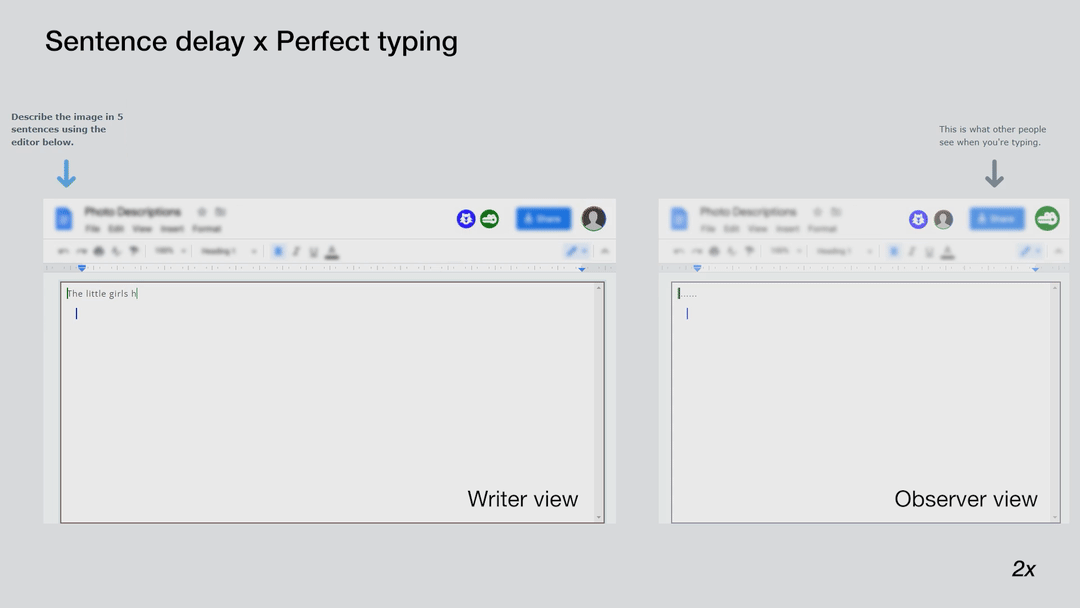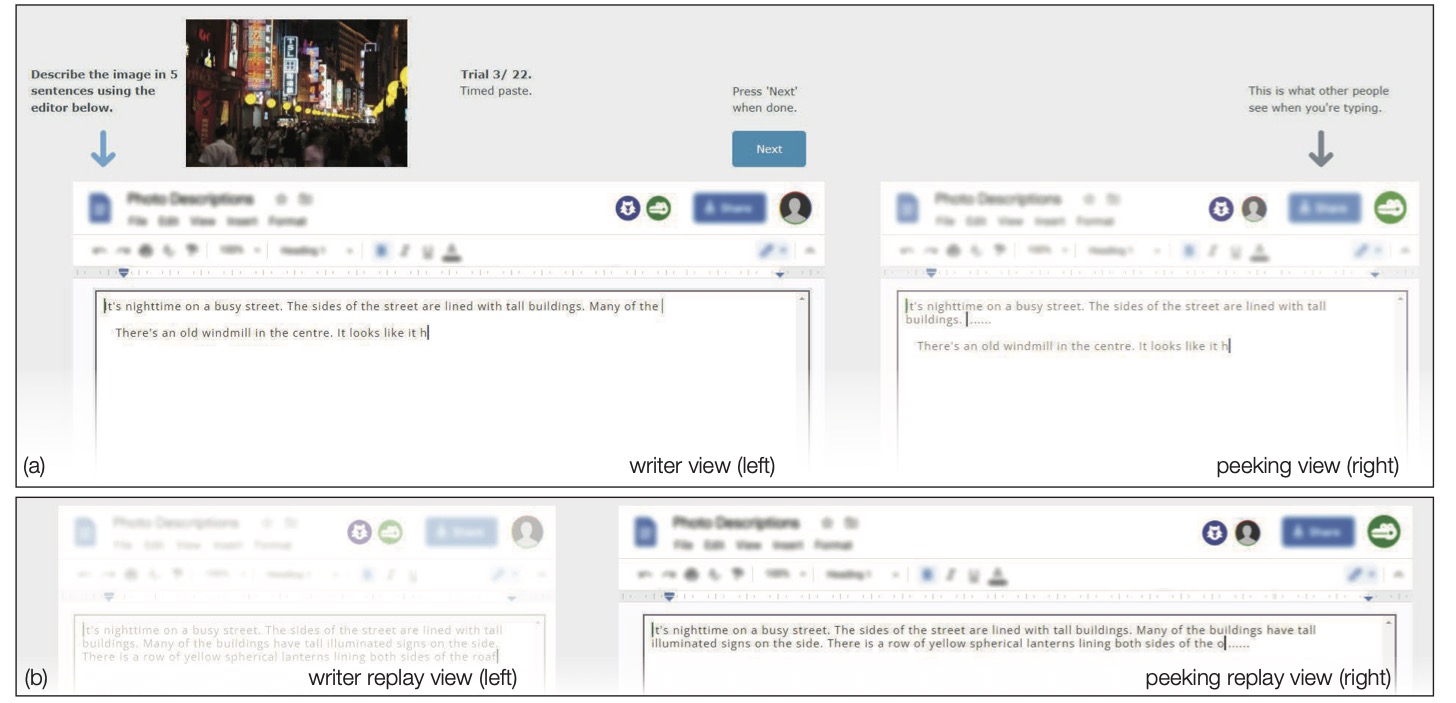We propose alternative update intervals and reveal methods in synchronized shared-editors to improve writer comfort. Our results show that alternatives to real-time updates are desirable, each having their own pros and cons.
Quick Facts
- Writers often feel uncomfortable when writing in synchronized shared-editors like Google Docs.
- We propose alternative update strategies that change when and how updates are shown to collaborators to give writers more control over when and how their edits are shown to collaborators.
- Results from two experiments show that alternative update strategies can be beneficial and desirable for improving comfort, each having their own pros and cons when it comes to hiding intermediate writing, speed, collaborator awareness, naturalness, and mental load.
Abstract
Synchronized shared-editors like Google Docs allow people to write together, but there is no “privacy of writing” which can make writers feel uncomfortable. We propose methods to give writers more control over when and how their edits are shown to collaborators to increase comfort. These are in the form of different update strategies composed of an update interval and a reveal method. Results from an experiment with simulated observers show that alternative update strategies can be beneficial, each having their own pros and cons. A follow-up experiment with writer and observer pairs validates these findings and shows that observers are amenable to experiencing short delays caused by alternative update strategies. Our work shows that synchronous writing tools should support alternative update strategies that preserve both collaborator awareness and writer comfort.
Update Strategies
Each update strategy consists of two components: an update interval and a reveal method. The update interval determines when updates are shown to collaborators. We consider three update intervals:
- Time delays, where updates are shared with collaborators every 10 seconds
- Character delays, where updates are shared after 15 characters are typed
- Sentence delays, where updates are shared after terminal punctuation is typed
The reveal method determines how updates are shown to collaborators. We consider three reveal methods:
- Normal typing, where all keystrokes are shown to collaborators with a typing effect, including typos and deletions
- Perfect typing, where only the final text is shown to collaborators with a typing effect, hiding intermediate keystrokes
- Pasting, where the final text is shown to collaborators all at once
Combining these update intervals and reveal methods results in nine update strategies, for example, “Sentence Delay + Perfect Typing”:

We also consider two baselines:
- Real-time updates, where updates are shared with collaborators as soon as they are typed, which represents current synchronous tools like Google Docs
- Manual updates, where updates are not shared with collaborators until the writer presses a button, which approximates techniques used in asynchronous writing tools
Experiments
We conducted two experiments to evaluate the effects of alternative update strategies on writer comfort and observer experience.
In the first experiment, participants described images in a shared-editor while being observed by simulated observers. After writing, they watched replays of their own writing to learn more about the techniques from the observer’s perspective and answered questions about their experience.

In the second experiment, participants worked in pairs and acted as both the writer and observer while working on a persuasive essay together.

Overall, participants saw value in having alternatives to real-time updates in synchronous shared-editors for increased comfort and noted that each update strategy had pros and cons when it comes to hiding intermediate writing, speed, collaborator awareness, naturalness, and mental load.

We hope our results will inform the future design of synchronous shared-editors to make them more comfortable to use.
Publication
Yen-Ting Yeh, Nikhita Joshi, and Daniel Vogel. 2024. The Effects of Update Interval and Reveal Method on Writer Comfort in Synchronized Shared-Editors. In Proceedings of the 2024 CHI Conference on Human Factors in Computing Science (CHI 2024). DOI: https://doi.org/10.1145/3613904.3642330.
BibTeX
@inproceedings {
Yeh2024UpdateStrategiesComfort,
author = {Yeh, Yen-Ting and Joshi, Nikhita and Vogel, Daniel},
title = {The Effects of Update Interval and Reveal Method on Writer Comfort in Synchronized Shared-Editors},
booktitle = {Proceedings of the SIGCHI Conference on Human Factors in Computing Systems},
series = {CHI 2024},
year = {2024},
location = {Honolulu, HI, USA},
url = {https://doi.org/10.1145/3613904.3642330},
doi = {10.1145/3613904.3642330},
publisher = {ACM},
address = {New York, NY, USA},
numpages = {13}
}
Contact Us



Yen-Ting Yeh,
Nikhita Joshi, and
Daniel Vogel.
Exii,
University of Waterloo © 2024
Blog post template by Johann Wentzel.


